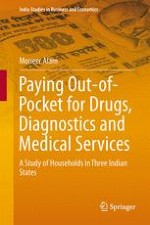
2013 | OriginalPaper | Chapter
1. Introduction
Author : Moneer Alam
Published in: Paying Out-of-Pocket for Drugs, Diagnostics and Medical Services
Publisher: Springer India
Activate our intelligent search to find suitable subject content or patents.
Select sections of text to find matching patents with Artificial Intelligence. powered by
Select sections of text to find additional relevant content using AI-assisted search. powered by